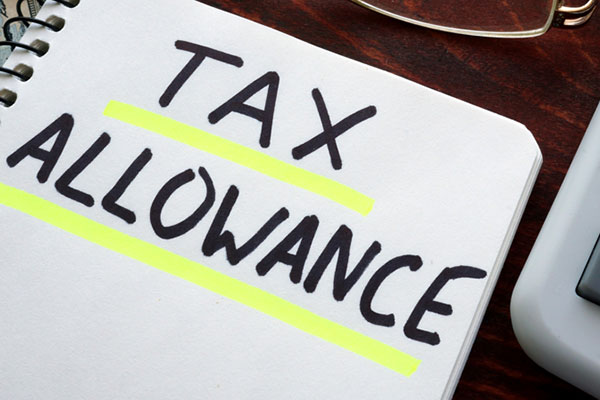Minimising Tax - Top 10 Ways

Minimising tax each financial year can be an exhausting endeavour.
Each annual Budget typically brings with it a slew of new legislation and increases in general taxation. Most of us grumble about it for a few weeks and then lose interest, choosing instead to plod on as usual, resigned to our fiscal responsibilities and inevitable fates.
Then of course there’s the moral debate concerning those who manage to legally reduce their tax liabilities. Yet, as an op-ed Financial Times commenter said under an article on a similar topic, “do you organise your affairs to pay more tax?”
The Panthera team have compiled ten ways you can look at minimising your tax liabilities - read on to find out more.
Minimising Tax Step One – Review your VAT accounting
How does your business conduct its VAT accounting?
The total VAT your business must pay or claim back from HMRC is traditionally calculated as the difference between the VAT your business charges its customers, and the VAT your business pays on your own purchases.
However, smaller businesses may benefit from the Flat Rate VAT Scheme. Using this scheme, you pay HMRC a fixed rate of VAT, and you get to keep the difference between what you charge your customers and what you pay on your own purchases.
To be eligible for this scheme, your VAT turnover must not exceed £150,000, and you’ll need to submit an application to HMRC.
It’s important to understand that, even for smaller establishments, being on flat rate VAT will require careful monitoring in order to see if it’s truly beneficial to you. For more information and advice, get in touch with the Panthera team.
Minimising Tax Step Two – Plan Business Investments
If you time your purchase of capital assets tactfully, you may benefit from deferring major discretionary expenditure such as refurbishment of premises, for example.
Usually, investing just before the end of your fiscal year is usually the most advantageous course of action. However, if you expect the next tax year to bring higher tax through increased profit, you may be able to benefit from deferral.
Minimising Tax Step Three – Plan Dividends Carefully
From April 2018, the dividend allowance falls – quite significantly – from £5,000, to £2,000.
This means that for basic rate taxpayers paying themselves a £5,000 dividend, it will cost them £225 in tax from 2018/2019 compared to £0 today. For higher rate taxpayers, the same sum will be subject to £975 tax annually, and for those at the top: £1,143.
Minimising Tax Step Four – Use Promoted Tax Breaks!
The government offer several tax break schemes which many aren’t using to their full advantage.
If you’re a serious investor, you may find the Enterprise Investment Scheme (EIS) – or its smaller counterpart the Seed Enterprise Investment Scheme – could reduce your tax liabilities if you use the schemes to invest. Though the process is fairly complex, you may be able to benefit from:
- Income Tax Relief
- Capital Gains Tax Exemption
- Loss Relief
- Capital Gains Tax Deferral Relief
See the government’s EIS article for more information.
Similarly, the Venture Capital Trust scheme allows qualifying investors to benefit from 30% income tax relief, with no tax payable on dividends.
And, if you’re concerned about tax relief on a more personal level, you may wish to look into how you’re contributing to your pension pot. Though the idea can seem unappealing/boring at first, investing in your pension allows you to save money with 40% tax relief now (as long as you’re within both the annual and lifetime allowances) with those savings only subject to basic rate in the future and having the chance to accumulate in value now.
Minimising Tax Step Five – Check your Tax Code
Though payroll is now automated, there’s always the possibility that your tax code could be incorrect if you’re an employee.
If you don’t fill out a self-assessment form every year, you may find that your tax is being calculated incorrectly. You may also want to check for inconsistencies if you:
- Pay tax at the higher rate
- Have other sources of income
- Have a company car, or other company benefits
- Are the director of a company
Checking to see if HMRC have your tax code correct could save you substantial amounts of tax.
Minimising Tax Step Six – Steer Clear of Company Cars
Tax is due on company cars which are privately used – this includes cars used for commuting to and from work. The tax you pay depends on the value the company car has to you individually, which depends on how much it would cost were you to buy it yourself, and the type of fuel it uses.
Company cars are costly - there’s no doubt about it. Plus, the rate of tax depends on your personal tax band, which can make them unnecessarily expensive if you’re a higher or additional rate taxpayer.
Instead, look at energy efficient vehicles, or even a company van – anything is better.
Minimising Tax Step Seven – Use the Entrepreneurs’ Relief Scheme
If you’re eligible, the Entrepreneurs Relief Scheme can mean you pay less Capital Gains Tax when you dispose of your business, or parts of it.
It also means you only pay tax at 10% on all gains made on permissible assets (up to a lifetime limit of £10,000,000).
However, the rules surrounding qualification for this scheme are complex, and for good reason, too – the tax breaks are extremely appealing.
The Panthera Team advises clients in advance of Entrepreneurs’ Relief eligibility, to make sure that any planned transactions don’t explode in your face.
Minimising Tax Step Eight – Review your Business Structure
The existing tax system means that trading in companies is favoured, whereas personal ownership for assets experience the best relief schemes.
Your tax liabilities will differ depending on whether you’re a sole-trader, partnership, member of a Limited Liability Partnership, or shareholder in a Limited Company.
In some cases, a ‘hybrid’ arrangement – also known as a mixed partnership – may be possible in order to allow for various levels of income to be paid to individuals, while additional funds remain with a member or corporate partner.
The Finance Act 2013 made putting together such a structure slightly more difficult than it used to be, though it isn’t impossible as long as you plan cautiously.
A simpler option may be to review your current business structure and decide whether moving up a step or reverting to a previous structure would be of greater benefit to you in terms of reducing tax liabilities.
Minimising Tax Step Nine – Wills & Inheritance Tax Plans
If you don’t have a will – get one. If you do – update it!
Passing away without an up-to-date will can make life extremely difficult for those you leave behind. Review yours regularly and always update it as and when major life events occur.
Take a look at the government’s page on IHT for more information.
Minimising Tax Step Ten – Marriage Means Money
If you aim to equalise income as much as possible within a marriage or civil partnership, you could experience substantial tax relief. This is especially beneficial for small business owners, or those whose spouses aren’t using all their allowances.
See the government’s Marriage Allowances page for information on Transferable Allowances, and High-Income Child Benefit Charges.
Minimising Tax Liabilities with Panthera
The Panthera team knows that, sometimes, navigating the world of tax can be daunting, resulting in people simply leaving it alone and hoping for the best.
Get in touch today on 01235 768 561 or at enquiries@pantheraaccounting.com for more information and advice on how to legally reduce your tax liabilities.

